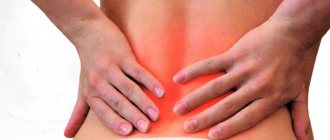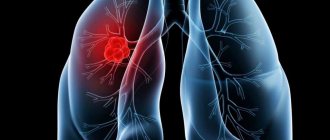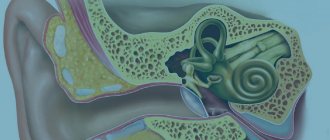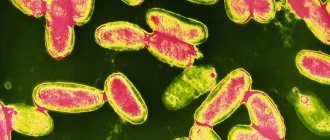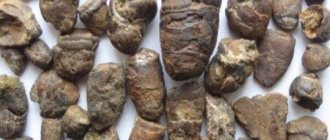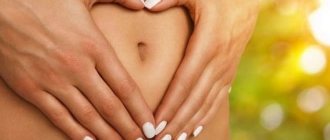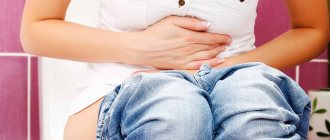When the mucous membrane of the walls of the colon becomes inflamed, they speak of the development of colitis. Drug therapy is selected after determining the cause of the disease. The treatment regimen is developed individually, since the symptoms, mechanism of development, as well as the severity of the disease are different for each patient.
But in any case, a combination of medications is needed that will simultaneously help eliminate the inflammatory process in the colon and alleviate symptoms. The following medications are prescribed for intestinal colitis: antibiotics, painkillers, drugs to restore intestinal microflora and normalize motility, antidepressants and vitamins.
Use of medications
When choosing a drug, the doctor relies on test results and the cause of the disease. Without eliminating the root cause, effective therapy does not seem feasible.
For example, if the disease was caused by helminthic infestations, then drug treatment will be aimed at destroying these protozoa.
When there is a history of other gastrointestinal disorders, they are treated. Often the medications for colitis are the same as for other ailments of the human digestive system.
Complications
Complications, as a rule, occur if no treatment was carried out, and the disease was left to chance, or was carried out incorrectly. The following complications are possible:
- intoxication;
- dehydration;
- development of anemia, blood loss;
- cancerous formations;
- migraines, dizziness;
- dysbacteriosis;
- intestinal obstruction;
- perforation of the intestinal wall, which can lead to peritonitis.
The listed complications can be easily avoided if you react to unpleasant symptoms in time, consult a doctor and carry out diagnostic measures. After the doctor determines the exact cause of colitis, competent treatment will be prescribed that will give appropriate results. It is very important to adhere to a diet so that the results of treatment therapy are as effective as possible. With the right approach, the prognosis is generally favorable.
Is it wise to use medications?
When buying pills, many patients wonder how advisable their use is. Medicines provide relief from unpleasant symptoms. Gas formation caused by putrefactive bacteria leads to bloating of the abdomen, a person feels the bursting effect of gases.
Their composition is toxic, so irritation of the nerve endings in the intestine occurs and it spasms. This reaction causes cramping pain. Patients often experience diarrhea.
It is unwise to tolerate these manifestations. It is better to remove them using modern methods, help the intestines restore favorable microflora, stop the inflammatory process and get rid of the uncomfortable manifestations of the disease.
What types of medicines exist
Treatment methods are selected by a specialist; it is not recommended to prescribe them yourself. The drugs are taken strictly under the supervision of a gastroenterologist. The choice of therapy method is determined by a number of factors: the composition of the microflora, the nature of the inflammatory process, concomitant diseases, the age category of the patient, etc.
- To eliminate abdominal distension and flatulence, products containing activated carbon, simethicone, and fennel extract are used.
- Restoring favorable flora in the intestines is the task of biological additives.
- If it is difficult to defecate, use a laxative.
- When a patient has an intestinal disorder, he is prescribed antidiarrheal medications.
- To reduce the lesion and relieve inflammation, the doctor prescribes anti-inflammatory drugs.
The combined use of these medications allows you to get rid of the problem and return to a normal lifestyle.
Use of antibiotics
The prescription of antimicrobial agents is very controversial; many doctors have their own point of view on this matter. Sometimes such substances kill beneficial microorganisms, causing dysbiosis and aggravating the picture of colitis.
The intestinal microflora dies, and treatment is delayed . But it happens that without the prescription of antimicrobial drugs, there is no recovery effect.
If spastic colitis is diagnosed, its treatment is better without antibiotics. In other cases, antimicrobial agents are prescribed by the attending physician.
Antibacterial therapy
When the pathogenic environment grows rapidly, it is necessary to resort to antimicrobial drugs. They are taken strictly according to the regimen recommended by the gastroenterologist. Depending on the patient’s condition and the stage of colitis, the doctor chooses the correct technique.
These may be medications from the sulfonamide group. For example, phthalazole or sulgin. They are taken strictly as prescribed by the gastroenterologist according to the following scheme:
- At the stage of intensive treatment of inflammation, the drug is taken six times a day. The number of days is determined by the severity of the disease and the body’s own efforts to recover.
- The second stage is the suppression of residual pathogenic organisms. It lasts two days and is taken four times a day.
- The third stage is consolidation of the effect. Two days are allotted for it, with medications taken three times a day.
Based on the results of a study of the patient’s microflora, the doctor can prescribe an antibacterial drug with a narrow spectrum of action, aimed at destroying a specific type of pathogenic microorganisms.
Antimicrobial drugs with hydroxyquinoline (Intestopan and Enteroseptol) are also common in the practice of colitis. These are more severe drugs; their use is advisable when microorganisms have developed resistance to many antibiotics.
The treatment regimen depends on the stage and advanced stage of the disease. The duration of therapy with medications containing hydroxyquinoline is about ten days.
Other folk methods
Shilajit is considered one of the most effective remedies for colitis. This substance heals well ulcers and erosions on the mucous membrane, relieves inflammation, eliminates pain and dyspeptic symptoms. Most often, mumiyo is used in the form of a solution. Dissolve this substance in an amount of 0.1 g in a tablespoon of water. Half of the resulting solution is taken orally, the other half is administered rectally. With this treatment, restoration of the mucous membrane and healing of ulcers are observed within a month.
Propolis is also often used. This beekeeping product has antibacterial, anti-inflammatory and regenerating properties. The most commonly used for treatment is propolis tincture, starting from 10% and up to 30% if well tolerated. Take 30-40 drops three times a day before meals. A decoction of propolis in milk has a milder effect.
There are many traditional methods for treating colitis. But some of them are not suitable for everyone, so you should consult a specialist before using them.
Description of various drugs according to their focus
Doctors use various medications to treat colitis. All of them can be classified according to the expected effect:
- Medicines of the sulfonamide class (Sulfasalazine, Mesacol). Their action is aimed at destroying pathogenic microorganisms.
- Complex medications (Intestopan, Mexaza). Suppresses unwanted flora and contains enzymes.
- Biological agents with beneficial microorganisms and eubiotic class drugs (Bifidumbacterin, Bifiform, Linex). The intestines are inhabited by lacto- and bifidobacteria.
- Preparations containing enzymes (Pancreatin, Mezim, Panzinorm, Festal). They improve digestion so that there are no putrefactive and fermentation processes in the intestines due to the ingestion of unfermented food.
- Medicines from the category of antispasmodics (No-shpa, Papazol, Bellastesin). Relieve pain if necessary.
- Monoclonal antibodies. Innovation in medical practice. They allow the body to deal with inflammation on its own, giving immune system cells the ability to recognize the problem and eliminate it.
Features of colitis treatment
Colitis has recently become a fairly common pathology. This is due to an abundance of stress and a large number of chemical additives in food. People of any age are susceptible to this disease, but most often those who have other pathologies of the digestive system are affected.
One of the most common causes of colon inflammation is infection. In this case, they speak of the development of enterocolitis, because other organs of the digestive tract are also affected. This pathology is acute, severe, with pain, diarrhea, and fever. This requires special treatment, possibly even placing the patient in a hospital.
But most often colitis occurs in a chronic form. It occurs when an infection enters the intestines, food poisoning, after prolonged use of antibiotics, dysbacteriosis, or poor nutrition. In this case, colitis can be ulcerative, spastic, toxic, catarrhal, infectious, erosive, atrophic, superficial, nonspecific. This classification takes into account the causes of occurrence, as well as the characteristics of the course of the disease. It is needed for a more accurate selection of treatment methods.
Indeed, with different forms of colitis, symptoms may vary. The main manifestation of the disease is bowel dysfunction. But the patient may suffer from constipation or diarrhea. They also often alternate. There is a painful urge to defecate, which is not always accompanied by bowel movement. Because of this, cracks and ulcers appear on the walls of the rectum near the anus.
The disease is also accompanied by abdominal pain. They are usually aching and dull, but can be spastic. The patient is constantly accompanied by discomfort. He feels flatulence, bloating, nausea. Therefore, treatment should primarily be aimed at eliminating these symptoms.
The direction of action of drugs and a review of popular drugs
The purpose of taking these tablets is to relieve the symptoms of the disease and eliminate the cause of its occurrence.
Sulfasalazine
Has a strong anti-inflammatory effect. It is based on the immediate suppression of the focus of pathogenic microorganisms by disrupting the metabolism in their cells.
The active substance does not allow the DNA chain to multiply. Sulfasalazine is indicated for patients over 16 years of age, 1-2 grams 3-4 times a day in the active stage. Next - 500 mg of the substance until the end of the maintenance phase. The medicine has a number of side effects, so it is prescribed only by a specialist.
Mekasol
Also an antimicrobial drug with a wide spectrum of effects. It is produced in the form of tablets that should be consumed an hour before meals 2-4 times a day. If there are no side effects and abnormalities in the liver and kidneys, then the dose is 50 mg per kilogram of the patient’s body weight.
Intestopan
A drug that inhibits the growth of pathogens. Quickly improves the patient's condition, eliminating bloating and relieving intestinal disorders.
At the stage of exacerbation of the disease, take 1-2 tablets 5-6 times a day immediately after meals. The duration of therapy is ten days . Extending the period of use is strictly prohibited.
Mexaza
It has the appearance of pills, prohibited from crushing and chewing. Has enzymatic and antimicrobial effects. Take the medicine with food or immediately before meals.
Take three times a day, one pill at a time. The duration of treatment is a week. In extreme cases, the attending physician may extend the course to four weeks, but under strict monitoring of the patient's vision.
Bifidumbacterin
A drug that populates the intestines with bifidobacteria. The prescription scheme is very simple, so patients often choose to take it. Two capsules of the medicine are taken before meals three times a day, with a couple of sips of water. The duration of therapy is quite long, it is six weeks.
Festal
An enzyme preparation approved for long-term use, up to three months. Prescribe 20 mg of the active substance three times a day after meals. Festal helps improve the digestion of food, preventing it from remaining in the intestinal lumen.
Panzinorm
This is also an enzyme class product. It is taken with every meal. Two tablets - with the main meal and one with a snack. You are allowed to drink up to 15 doses per day.
No-shpa
Antispasmodic. Relaxes the smooth muscles of the intestines, relieving pain. For chronic colitis, take two tablets twice a day; in the acute stage of the disease, it is allowed to increase the number of doses up to three times. Typically the course lasts three days, but if necessary it can be extended to five.
Bellasthesin
Painkiller. Admission - only for therapy in adult patients (over 14 years of age). For any form of the disease, 1 capsule is prescribed three times a day. The maximum course of admission is five days.
Nutrition
For intestinal colitis, the patient is prescribed a special diet. It is necessary to exclude fruit juices, carbonated drinks, pork, and fresh bread from the diet. Fried and spicy foods, fresh vegetables, salads, animal fats, and bran are not consumed. All food must be steamed or boiled. Vegetable soups, baked fruits, white poultry meat, day-old bread or crackers are allowed. Oatmeal, stewed pumpkin, baked apples, dried fruit compotes are healthy.
Some foods can be used as medicines. For example, in the summer a course of treatment is carried out with watermelon peels or seeds. They are brewed in a thermos and taken half a glass of the decoction before eating. Decoctions and infusions of various berries are also useful: viburnum, blueberries, bird cherry.
A honey solution has a healing and anti-inflammatory effect. It is also often recommended to drink various juices. Chronic colitis is well treated with a mixture of spinach, carrot, beet and cucumber juices. And at the initial stage of colitis, onion or potato juice is effective.
Instead of black tea and coffee, it is recommended to drink green tea. It will help get rid of nausea and heartburn. Chicory infusion is also effective. If you brew it with milk, the drink will resemble coffee, but will have a healing effect on the intestines.
Many people know the beneficial effects of seaweed. It is not recommended to take it fresh for intestinal inflammation, but dried and crushed it treats ulcerative colitis well. An effective medicine in powder form can also be prepared from dried fruits. Dried apricots, prunes and figs are dried and crushed. Aloe juice is added to the resulting powder, and balls are formed from this mass. They must be taken for a month before meals.
Some foods for colitis are medicinal
Inexpensive medicines for colitis
Treatment for colitis is expensive. Many people are interested in whether there are drugs that are not expensive. Here are some of them:
- An inexpensive analogue of No-shpa is Drotaverine. It has an antispasmodic effect if the patient needs it.
- Vaseline oil. Used to soften the anal sphincter, allowing feces to come out gently.
- Loperamide. Prescribed for diarrhea, taken after each bowel movement.
- Bificol. A relatively inexpensive supplement for repopulating the intestines with beneficial flora.
Diagnostics
A visit to a proctologist, who will examine the condition of the rectum during examination. She, as mentioned earlier, will definitely show a deterioration in her health. There may be cracks on it, such as fistulas that extend towards the colon, or itchy lesions of the anus.
An endoscopic examination takes place after a preliminary enema. However, in very acute situations this rule is not followed. The study will show the distortion of the vascular pattern that is characteristic of the surface of the large intestine in a healthy state. Haustra, that is, division into segments, may be less pronounced or absent, the lumen is narrowed. Some areas will be obscured from view due to pus and bleeding. Treatment of intestinal colitis with folk remedies is impossible in this case.
X-ray also shows lost haustration, segments of the colon are smoothed, a decrease in the lumen for the passage of feces, the mucous membranes lose their uniformity, there are “fluffy” areas where the mucous membrane does not have its characteristic smooth texture at all.
Donating blood for analysis will show anemia, that is, reduced levels of iron and red blood cells in the blood. This occurs not only due to bleeding, but also due to poor colon function, which does not properly supply nutrients to restore the blood. Also among the causes is inflammation - the body constantly spends part of its resources to restore damaged tissues and fight infection. A blood test will also show an increased level of leukocytes (white blood cells), which are produced to fight harmful bacteria.
Microbiological examination may be optional, but desirable. It can reveal whether a viral infection is occurring. Then treatment will have to include antiviral solutions administered through an enema. Pathomorphological examination helps to distinguish pseudopolyps, which are the result of too intense restoration of the mucous membrane and indicate the beginning of the last stage of the disease, which is very life-threatening.
Colitis is detected using laboratory and instrumental studies. Diagnosis of intestinal colitis is made using the following tests:
- General clinical blood test. The study will show an increase in ESR and red blood cell levels, which indicates active inflammation in the body.
- Coprogram - examination of stool. In the biological material of a person with colitis, streaks of blood and a large number of leukocytes will be found.
- Bacteriological research. The test involves inoculating microflora from the patient's stool to detect the causative agent of the disease.
- Polymerase reaction. The study will help identify the presence of helminths or viral particles in the intestinal contents.
- Serological testing for suspected autoimmune origin of the disease. The technique is aimed at detecting antibodies in the patient’s blood against the membranes of special blood cells – neutrophils.
- Determination of fecal protein. The study is carried out to identify Crohn's disease, a concomitant disease of which is ulcerative colitis.
However, most laboratory tests are nonspecific, so they may indicate other diseases with similar symptoms.
To confirm the diagnosis, it is necessary to conduct the following instrumental studies:
- Contrast irrigoscopy. The study involves filling the patient's large intestine with a contrast agent that is clearly visible on x-rays. Based on the resulting image, it will be possible to judge the presence of erosive phenomena, stenoses, and malignant neoplasms, which are complications of colitis.
- Fibroileocolonoscopy. During the study, the patient's intestines are examined using an endoscope, which has a special camera and a device for collecting biological material. During the test, doctors will be able to accurately determine the location of the inflammatory process and see what stage it is at.
- Ultrasound. An ultrasound examination clearly shows pathological processes leading to changes in the intestinal lumen.
- Biopsy. After the examination, doctors obtain a small fragment of the intestinal wall. A biopsy is necessary because the symptoms of colitis are in many ways similar to the manifestations of malignant tumors. Histological examination of the obtained material makes it possible to differentiate these diseases.
